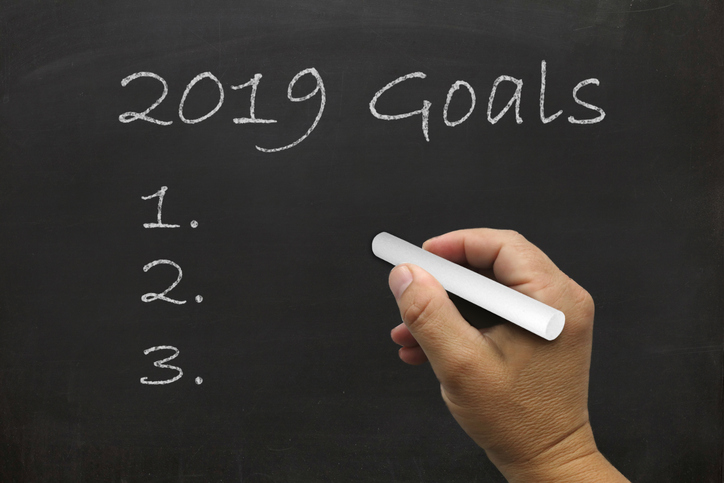2019 is right around the corner and with the closing of every year, now is the time to start everyone’s favorite activates: strategy planning & goal setting.
It is important to create goals and actually stick with them. This not only helps you craft a marketing & strategy plan, but it helps you manage your goals and assess them. We also suggest picking a day once a quarter to review the goals you set see where you are succeeding or need improvement.
Goals vs. Objectives
First, let’s set the record straight when it comes to goals and objectives for your restaurant.
Objectives are not specific. They are your broad aims. For example, stating that you would like to increase sales, would be an objective.
Goals on the other hand, are objectives that you attach numbers and deadlines to. For example, a goal is: wanting to increase sales by 15% in six months.
Ultimately as a restaurant owner, your goals need to follow the SMART guidelines. This means they are:
S – Specific
M – Measurable
A – Attainable
R – Relevant
T – Timely
A SMART goal helps you realize your objectives sooner and achieve them in a timely manner. Your goal should be specific. You’ll find you have more success with a specific goal than a broad one. To set a specific goal, you ask the question why.
For example, why do you want to improve customer loyalty? Once you know the why, which is the big picture, you can begin outlining your goal and then back it up with a strategy.
When talking about goals, only you and your business leaders know what is best for the restaurant. However, if you are having a difficult time getting started, below are some example goals to spark your mind.
#1: Increase Monthly Net Sales By X Amount
This goal is always on everyone’s mind and usually the top of the list. We all want to increase sales, and you should. Just remember, sales are just one piece of the successful puzzle. Reducing wasted costs is just as important as sales. Before you define your goal and plan, you need to know what your sales are currently, where you want to take them and the time frame to make it happen.
#2: Increase Daily Net Sales By X Amount
Here is an example of a short term goal. It might be tied to a holiday or weekend promotion.
#3: Improve Customer Satisfaction
With this as a goal, you might consider launching a loyalty program to reward consistent customers and gauge customer satisfaction. Your strategy to reach this goal could include tactics to train your staff how to provide excellent service and incentivize employees who get it right.
#4: Improve Your Social Media Engagement
For example, your goal may be to increase your Facebook followers by 25% in six months. Insert any social media platform and go from there. However, make sure that you connect your social media to some kind of value to your company. Sure, it may be great to have 5k followers, but how does that translate into revenue? How many sales do I make from my Instagram, YouTube, Facebook, etc. followers? Think about adding cookies to each source so you can track and definitely say which channels are the most profitable.
#5: Grow In-restaurant Traffic
Some restaurants want to bring more diners inside. Whether it is breakfast, lunch or dinner, you might set a goal of bringing in 50 more customers this month. Once you’ve got the goal, you can focus on using email, website, social platforms and other strategies to bring in new customers. You can always promote this with specials, gift cards or discounts for referrals.
We hope that these example goals inspire you to set your own. What are you looking to focus on in 2019? Be sure to let us know in the comments below or on our Facebook and Twitter pages!
Serious about updating your POS? Check out the Northstar POS system to improve the power and effectiveness of your restaurant!

